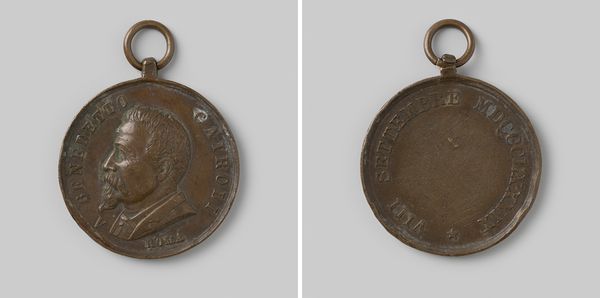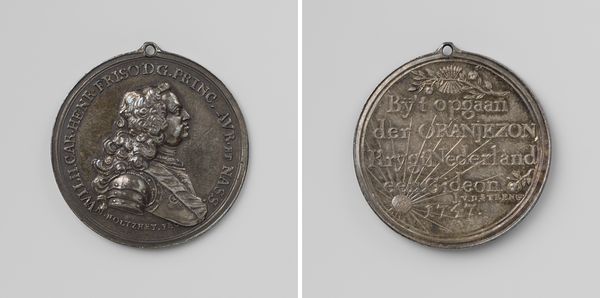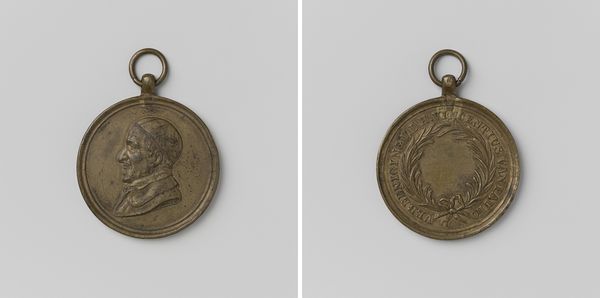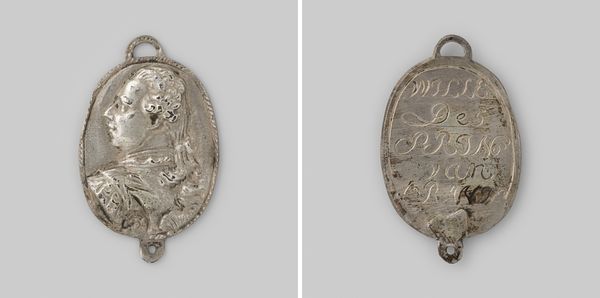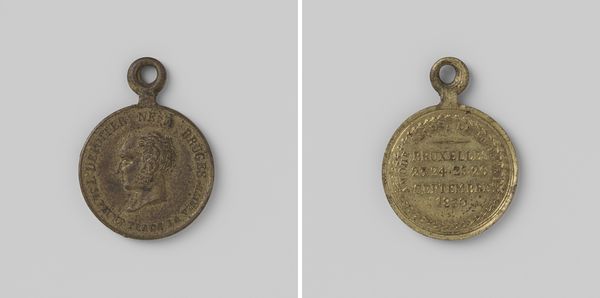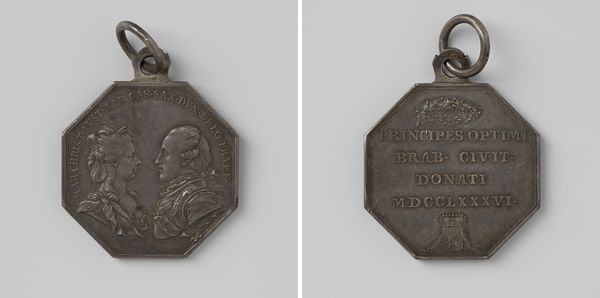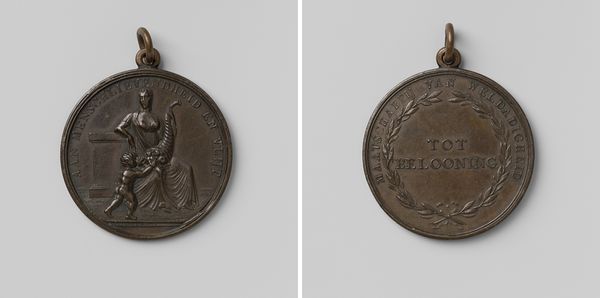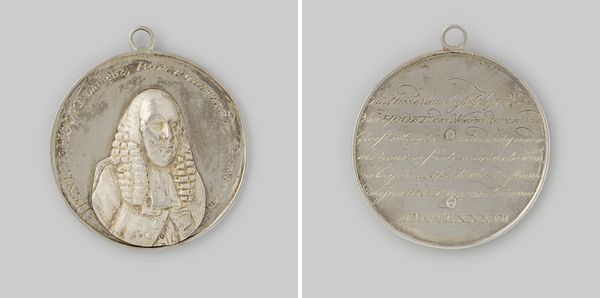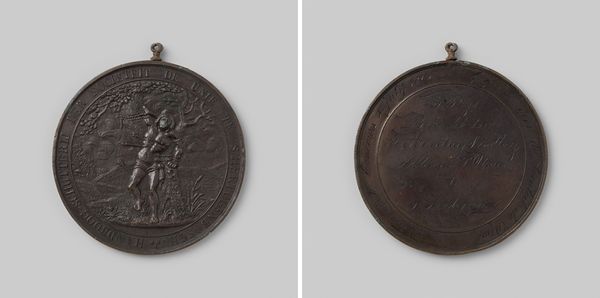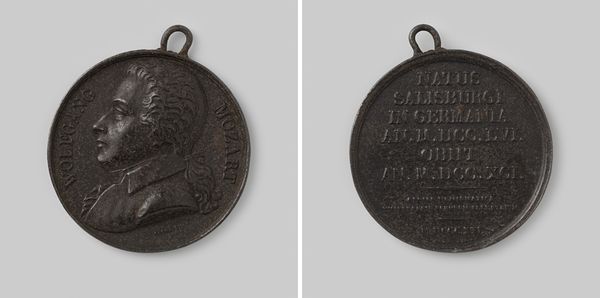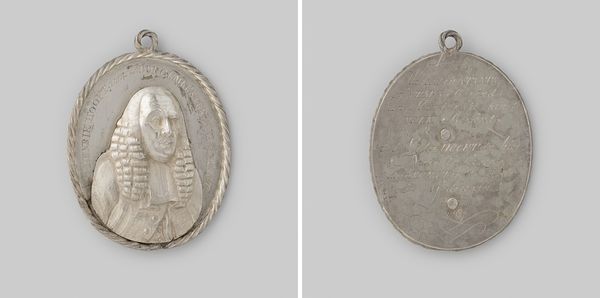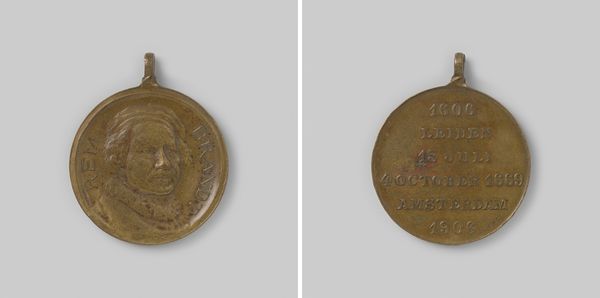
Herstel van Willem V, prins van Oranje-Nassau, als stadhouder, draagteken van de buurt van het Nieuw Noordeinde 1787
0:00
0:00
anonymous
Rijksmuseum
metal, relief
#
portrait
#
neoclacissism
#
metal
#
relief
#
history-painting
Dimensions: length 5.6 cm, length 4.4 cm, width 3.7 cm, weight 19.51 gr
Copyright: Rijks Museum: Open Domain
This silver pendant, commemorating the restoration of Willem V as stadtholder, was made in 1787 by an unknown maker. Silver lends itself to intricate detail, seen here in the portrait of Willem V and the inscription on the reverse. But more than its aesthetic appeal, silver was a material of power, a mark of status in the 18th century. The pendant was likely produced using techniques such as casting, chasing, and engraving. The maker would have needed a deep understanding of metallurgy, and the ability to manipulate the material precisely. Considered within its historical context, the pendant speaks volumes. It's a symbol of political allegiance, a tangible representation of power dynamics. The relatively small scale suggests it was made to be worn, displaying the wearer's loyalty to Willem V. Looking at the pendant as a product of craft, deeply embedded in histories of creative practices and aesthetics, allows us to challenge the traditional boundaries between art, craft and social context.
Comments
No comments
Be the first to comment and join the conversation on the ultimate creative platform.
